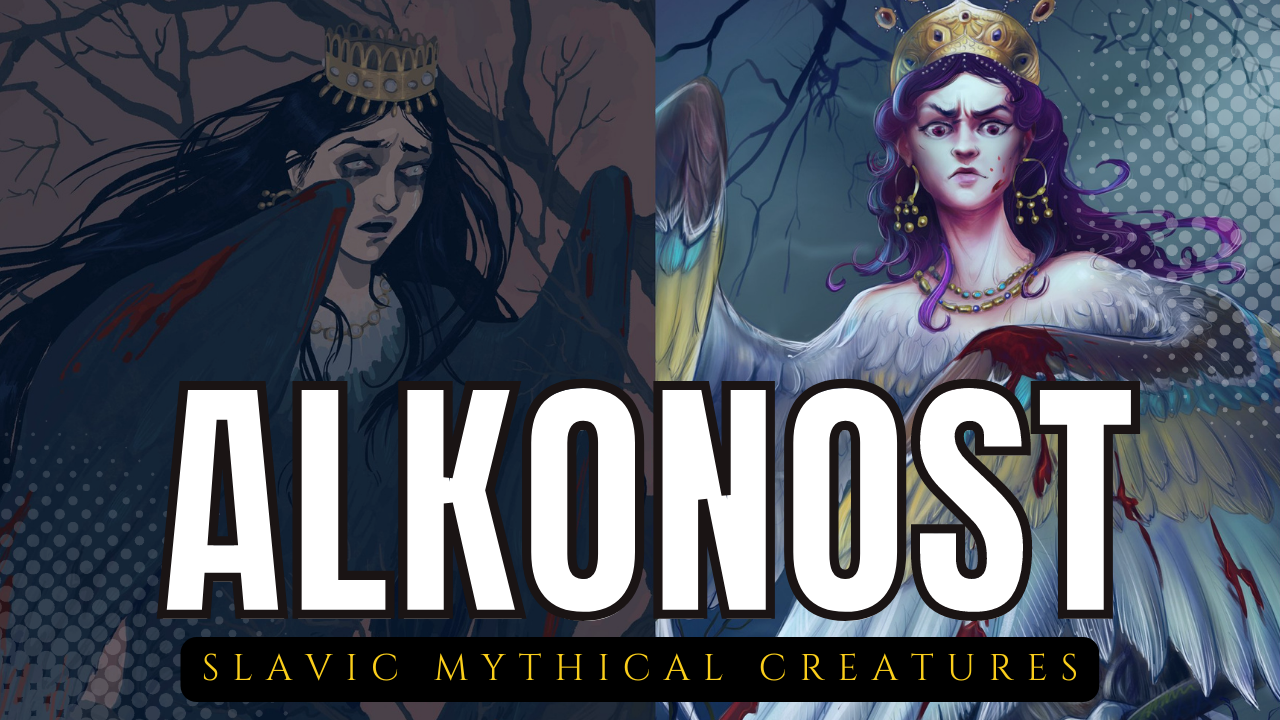 Alkonost is a legendary bird-like creature with a female human head that appears in Slavic folklore. Some say it’s a gorgeous creature with a seductive voice and look that draws in humans. This shapeshifting species, which looks like a cross between a bird and a person, is claimed to be breathtakingly beautiful. The bottom half of the creature is a sophisticated bird with eagle-like features, and the upper half is a lovely woman with flowing locks and piercing eyes. Those noises the Alkonost generates are probably its best-known feature. According to numerous folktales from the Slavic world, the song that comes from its throat is both mighty and alluring. They say that once someone has heard these noises, they will never be able to experience joy again.
Alkonost is a legendary bird-like creature with a female human head that appears in Slavic folklore. Some say it’s a gorgeous creature with a seductive voice and look that draws in humans. This shapeshifting species, which looks like a cross between a bird and a person, is claimed to be breathtakingly beautiful. The bottom half of the creature is a sophisticated bird with eagle-like features, and the upper half is a lovely woman with flowing locks and piercing eyes. Those noises the Alkonost generates are probably its best-known feature. According to numerous folktales from the Slavic world, the song that comes from its throat is both mighty and alluring. They say that once someone has heard these noises, they will never be able to experience joy again.
The Alkonost is both a sight to behold and a joy to be around; it is a beautiful, submissive creature that flies around happily, singing a magnificent and hypnotic song. She can captivate and mentally paralyze her listeners, making them forget about everything except listening to her enchanting vocals and melodies. Her nest is on the beach, and the eggs are carried to the sea. There is a quiet before the storm lasting seven days before the eggs fully hatch, so goes one version of the Slavic folktale.
Even though the myth’s origin is shrouded in mystery, the mythic creatures may have their roots in Greek mythology. The Greek goddess Alcyone, who became a kingfisher, is supposed to be the inspiration for Alkonost’s name. The Alkonost is typically represented alongside Sirens because she shares their entrancing singing and avian-human hybrid appearance. The first sirens took the shape of a woman and a fish, but later sirens morphed into woman-bird hybrids. They sang and played music that captivated sailors, leading many to their doom.
According to legend, a Siren would come on Apple Spas at the apple orchard feeling sad, but by afternoon, Alkonost would come out to celebrate and laugh. She also sang lovely songs to the saints and predicted their future happiness. Still, their exquisite voices enchanted humans to the point that they abandoned all thoughts of earth and its inhabitants in favour of the divine creatures. They remained until they eventually passed out from exhaustion and drowned.
According to Russian folklore, this mythical bird shares the underworld with Sirin, a fabled creature with a woman’s head. It is hazardous for individuals who make their homes on the water, as laying an Alkonost egg almost invariably coincides with violent thunderstorms. Legend has it that Alcyone, Aeolus’s daughter, inspired the Alkonost’s moniker. As divine retribution, the gods turned Alycone into a bird.
Like the Alkonost, depictions of the Gamayun feature a giant bird with a woman’s head. Her universally recognized likeness stands for joy, wealth, and peace. She has a lovely voice and acts as a peace ambassador. In Russia, she is held in high esteem as a prophet due to her ability to foresee the future, both human and animal, and divine and heroic events. She calls an island along the Euphrates River, sometimes known as Eden, home. The Pythoness is rarely shown with the Alkonost or the Siren; instead, she has always represented alone, despite her knowledge of humanity’s and earth’s ultimate doom.
The Russian pagan gods Krysten, Kolyada, Dazhbog, and Veles worked along with Gamayun. She is worshipped as a manifestation of Veles, the goddess of intelligence and the keeper of ancient mysteries. She has seen beyond appearances, knows what the gods and humanity are like, and sings about it in the Vedas. Some say the being’s hymns have divine and magical characteristics; her speech is difficult to comprehend and decode, but the rare humans who do are rewarded with foreknowledge of their destiny and great wealth. The Alkonost comes from ancient Greece, while the Iranian mythological bird has become popular in Russia.






